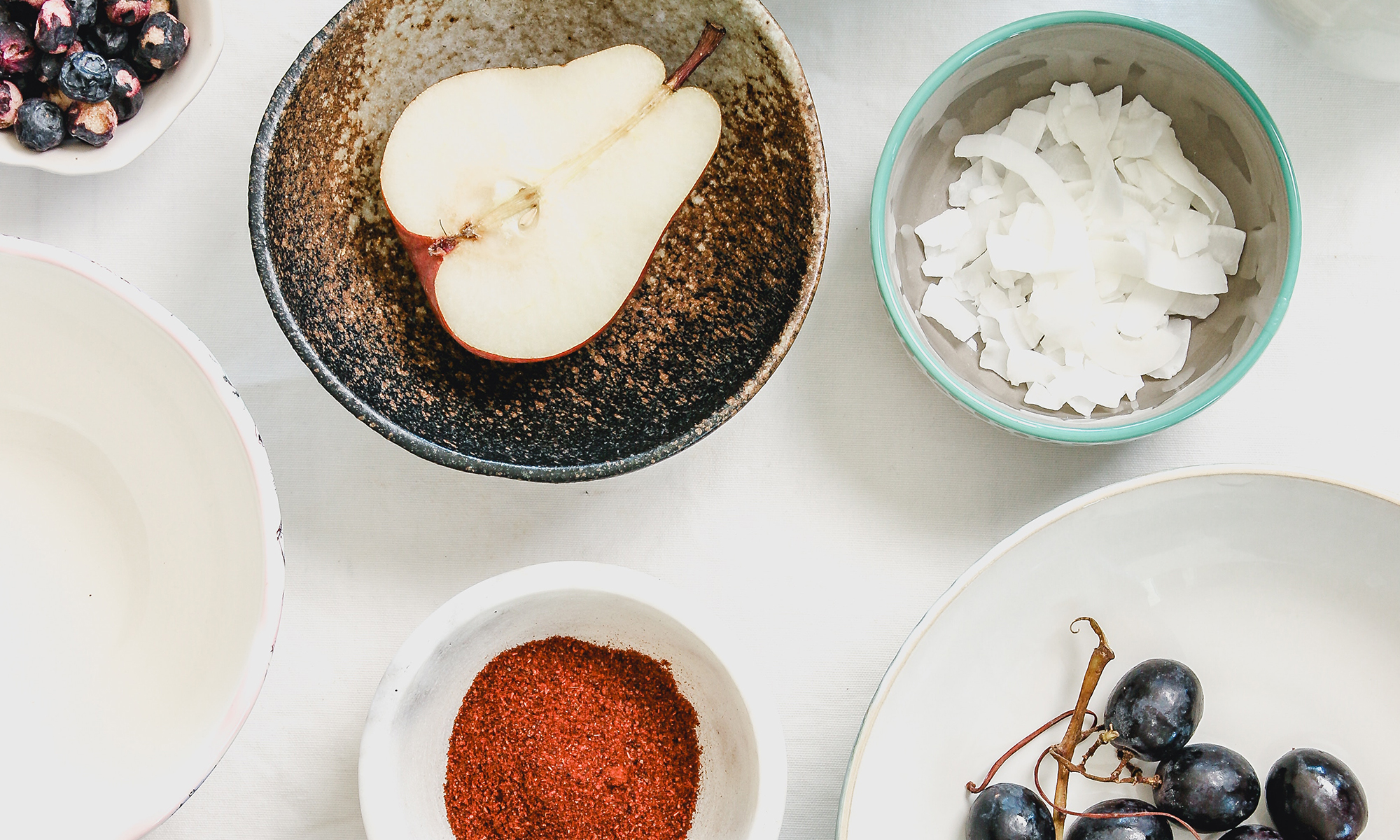If you want to eat authentic Vietnamese, you must eat the street food, whether it’s a food cart attached to a bicycle or just outside a store front. While the tour books will recommend gourmet, “authentic” restaurants, you will rarely see a native Vietnamese. Why, you ask? Because most Vietnamese don’t eat this way, except on very special occasions. Their culture is to eat street food or at home. To me, this inherently makes an upscale restaurant lacking in the full authenticity — while the flavors of the food may be right, the atmosphere is not. The locals are accustomed to paying $2 or less for a meal. The price of a restaurant (which to many of us still seems cheap) is astronomical. The average annual salary in Vietnam is just over $1,000 USD. [[To be fair, I ate many meals at the “gourmet” restaurants when I was craving a little serenity (and a glass of wine) within the hecticness of the crazy metropolis]]
When I say street food, I really mean sidewalk food. Food vendors set up shop on the sidewalks. They will cart out a propane tank to fuel their wok or stock pot, a bucket of water to rinse dishes (and another soapy bucket) and a few plastic chairs and tables. They may have a glass display for their herbs and meats. It’s unlikely that they have any refrigeration. Some vendors have store fronts, and others just transport their cart on the back of their bicycles.
<
Most people will caution you against eating the street food. In developing countries like Vietnam, the water sources are questionable at best, and drinking the water can make the uninitiated sick. You’ll be advised to only eat foods/vegetables that have been cooked or peeled. A good approach is to slowly ease your way into the questionable territory. Our systems aren’t used to the bacteria, so we need to slowly introduce it into our systems. On my first day in Vietnam, I even brushed my teeth with bottled water. On the second day, I ate a slice of raw cucumber. By the third day, I was brushing my teeth with tap water. And by the end of the trip I was eating with abandon and never got sick!
The best way to discover new dishes is to follow your nose. When wandering the streets of Hanoi, I smelled some incredibly delicious grilling meat the sign on the cart said, “Bun Cha.”
I watched for a few minutes, decided everything looked fresh and healthy, and plunked my big, American bum into the tiny Vietnamese chair. I held up my index finger, “One, please.” I wasn’t sure what I ordered, but there was a lovely woman to guide me through.
They brought me a bowl of broth with the grilled pork meat balls and floating slices of green papaya and carrot. On the side was a plate of fresh herbs, rice vermicelli and spring rolls. The condiment dish had fresh sliced garlic and chilies. With a combination of Vietnamese and sign language, she told me to put garlic and chilies in the broth. Dip the noodles in and eat with the meat balls. The spring rolls are wrapped in the lettuce and herbs, and eaten on the side.
Much to my delight, I learned this recipe in my first cooking class.
Bun Cha (adapted from Hidden Hanoi)
(serves 4)
1 pound fresh rice vermicelli or rehydrated noodles.
1 head boston lettuce
1 bunch mint
1 bunch cilantro
1 pound ground pork
1 large shallot, peeled and diced
2 stalks lemongrass
2 garlic cloves
1 small red chili
2 tablespoons honey
2 tablespoons plain oil
1 tablespoon fish sauce
2 tablespoons coconut caramel (or palm sugar or brown sugar)
1 teaspoon salt
1 teaspoon freshly ground black pepper.
Dipping Sauce/Broth
1. Wash lettuce, mint and cilantro. Soak in salt water for 5 minutes. Drain and set aside on a serving plate.
2. Finely chop lemon grass, garlic, shallots and chilies (or grind with a mortar and pestle). Mix with ground pork. Add remaining ingredients and mix to combine. Let marinate for 10 minutes.
3. Form meat into meatballs about 1 inch in diameter. Put on a grill-rack.
4. Cook meatballs over a charcoal fire until caramelized on the outside and cooked through, about 10 minutes depending on the fire.
Dipping Sauce
1 cup water
6 garlic cloves, chopped
1/2 small kohlrabi or or green papaya
1 small carrot, peeled
1 small chili, seeds removed and sliced
2 tablespoons fish sauce
1 tablespoon rice vinegar
1 tablespoon lime juice
3 teaspoons sugar
1 teaspoon salt
1. Thinly slice kohlrabi adn carrot. Toss with salt and let stand for 5 minutes. Rinse.
2. Heat water to a boil. Add garlic, chilies, fish sauce, vinegar, and sugar. Stir until sugar dissolves. Remove from heat and add kohlrabi, carrots and lime juice.

Street food is more authentic and probably tastes better than any fancy restaurants in VN. Very inexpensive and available everywhere. I love that!
bún chả is number one!!! could eat that any day…
I was in Hanoi two weeks ago and the Bun Cha ruled. What a fun way to eat and don’t forget to add the chilis.
I had bun cha last night in Hanoi. Before I came my Western doctor told me not to eat anything raw. My Chinese medicine doctor told me to eat lots of chilis and garlic for protection and not to worry. I followed the second advice and have not regretted it!